What Is Cannabis: All About Its Compounds And Effects
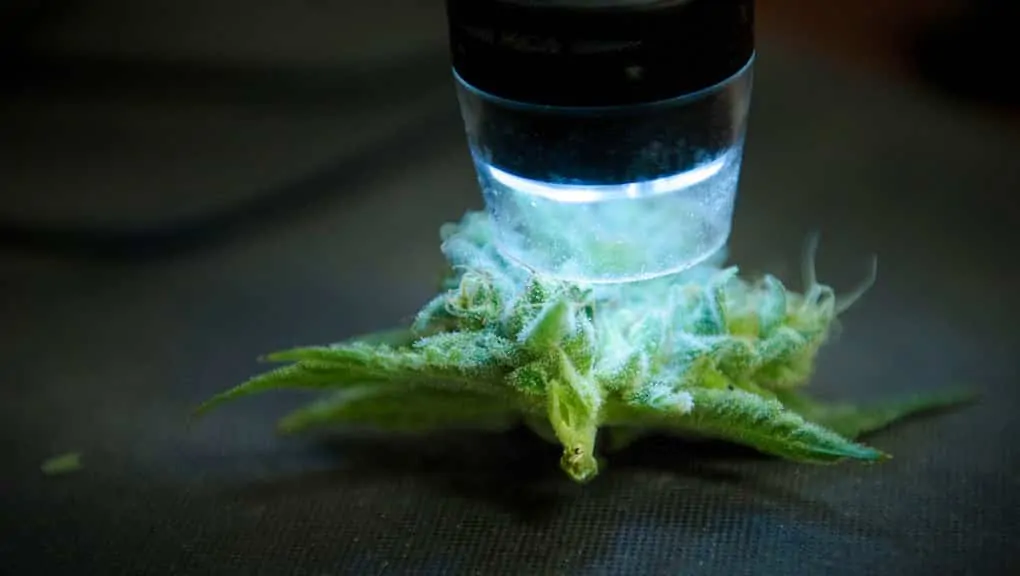
Cannabis is the most famous and the most controversial plant ever. It had a bad image for decades, but it’s making a big return these days. Canada and the US showed they understand the potential benefits, which is why they legalized it with certain restrictions. On the other hand, this herb is not perfect, and it could have some side effects when used in inadequate quantities. We need more studies on marijuana to understand how it affects the body and mind of a daily consumer over a few decades.
However, those who tried marijuana mentions it helps in dealing with various serious diseases and health conditions. Some users pinpoint that treatments, such as chemo, are easier to bear with cannabis. Others mention they experience pain relief, while recreational users claim they feel more creative and focused. They reveal that they feel productive when working, and super relaxed and sleepy when they face insomnia.
So, where is the truth? Who is right and who is wrong? How exactly does this unique plant affect minds and bodies? That is what our article is about. Below, you can find information about its compounds (terpenes and cannabinoids,) effects, and also ways to consume marijuana.
Compounds Of Marijuana – About THC, CBD & Others
Cannabinoids are the primary active components you’ll find in the cannabis plant. For a long time, the public’s focus was on THC, and the increase in CBD increased over the past couple of decades. Most research studies analyze these two compounds. The truth is that cannabis has over a hundred cannabinoids, and we’ll discuss the critical ones below.
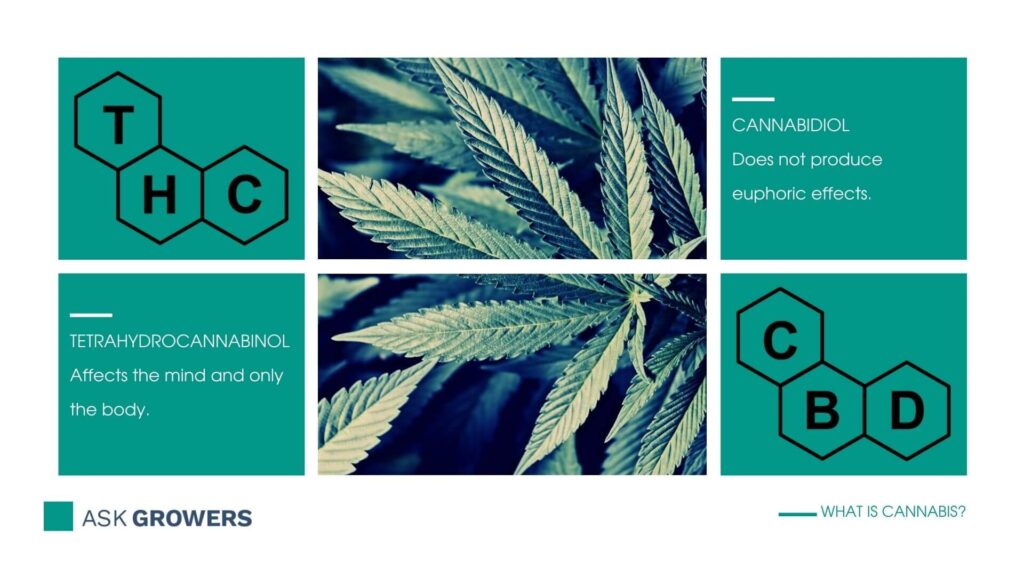
Before that, it’s vital to understand that the human organism has an endocannabinoid system. It’s an inner system that’s believed to make cannabinoids. Once you consume marijuana, your ECS recognizes those compounds. It has receptors called CB1 and CB2 that are capable of using those substances.
Now, CB1 receptors are in your brain, and they primarily react to THC. It’s why you’ll often hear about this compound’s psychoactive properties. Unlike that, CB2 is in charge of interacting primarily with CBD. That’s why cannabidiol mostly affects the body and not the mind. It’s worth noting that the system works to recognize other cannabinoids, too. That means different marijuana strains and quantities of these compounds can affect how you feel after consuming cannabis.
How Can Marijuana Compounds Affect Your Body?
The idea is to go for full-spectrum products because they contain a wide variety of cannabinoids effects. That should secure synergy and deliver better effectiveness. It’s the beauty of using this herb – the combinations are endless, and it’s all about finding a choice that suits your preference.
THC – Everything You Should Know About How It Affects Our Bodies & Minds
When it comes to popularity, THC is probably in the first place among the types of cannabinoids. It stands short for tetrahydrocannabinol, and its major characteristic lies in the fact that it interacts with the mind. The professionals call these psychoactive properties.
Here is an overview of the effects to expect with cannabis strains containing THC:
- Strong euphoria
- Positive mood overall
- A surge of energy
- Stress relief and relaxation
- Pain relief
- Giggling
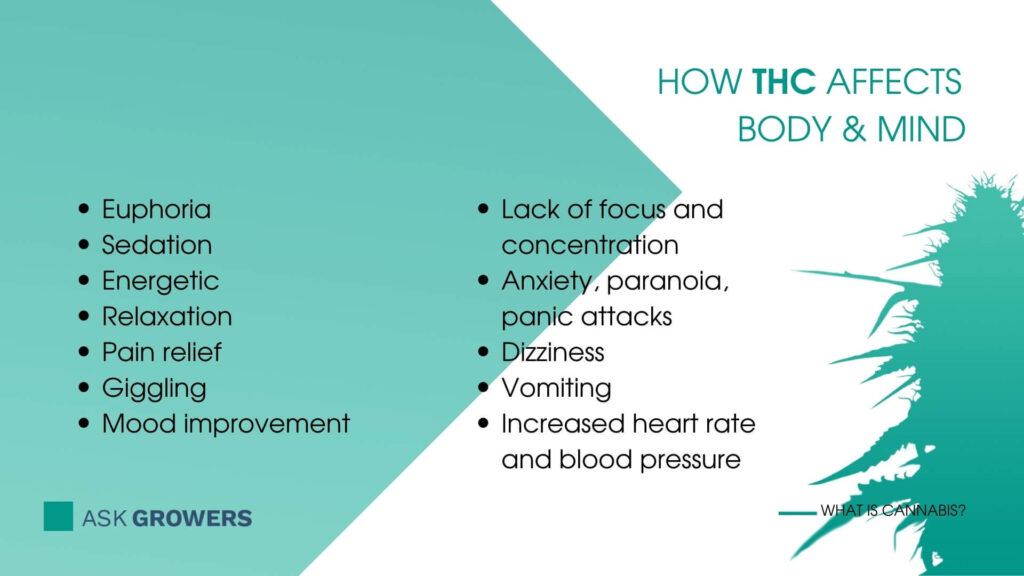 The higher the THC quantity in the cannabis product you are using, the more effects you’ll probably experience. Please note that the exact reaction depends on the individual – some might feel strong effects with small doses, while others could need more.
The higher the THC quantity in the cannabis product you are using, the more effects you’ll probably experience. Please note that the exact reaction depends on the individual – some might feel strong effects with small doses, while others could need more.
Since it interacts with the mind, you need to be aware of the potential THC’s side effects. People tend to experience them with large quantities of THC, and the actual reaction can be individual.
Here are some downsides you can experience when using THC:
- Lack of concentration and capability to focus on something
- Paranoia, feeling anxious and experiencing panic attacks
- Vomiting and dizziness
- Increased blood pressure and heart rate
As we mentioned, it’s all about how much THC you consume. If you stick to reasonable doses for your organism, there shouldn’t be any major problems.
It’s vital noting that some countries have implemented regulations when it comes to maximum THC quantities in marijuana strains. For example, the US federal law specifies that cannabis products shouldn’t have more than 0.3% of this compound. Many manufacturers do lab testing to prove their items are in line with these regulations.
CBD - Everything You Should Know About How It Affects Our Bodies & Minds
Although THC is still holding the leading position, CBD has come dangerously close to the list of cannabinoids. Furthermore, many describe it as a new trend in the cannabis industry. CBD is an abbreviation for cannabidiol, and it’s among the most active cannabinoids in this herb. Its major benefit is that it doesn’t have psychoactive properties like THC. That means you can experience the benefits of cannabis without having to deal with it affecting your mind.
Here are the main advantages of using cannabidiol:
- Pain relief (it includes relief from chronic pain like the one caused by arthritis, but also localized pain caused by injuries)
- Inflammation relief (it helps to deal with local and chronic inflammation)
- Stress relief and promoting relaxation
- Improved cognitive abilities
- Enhanced skin appearance
- Antipsychotic properties
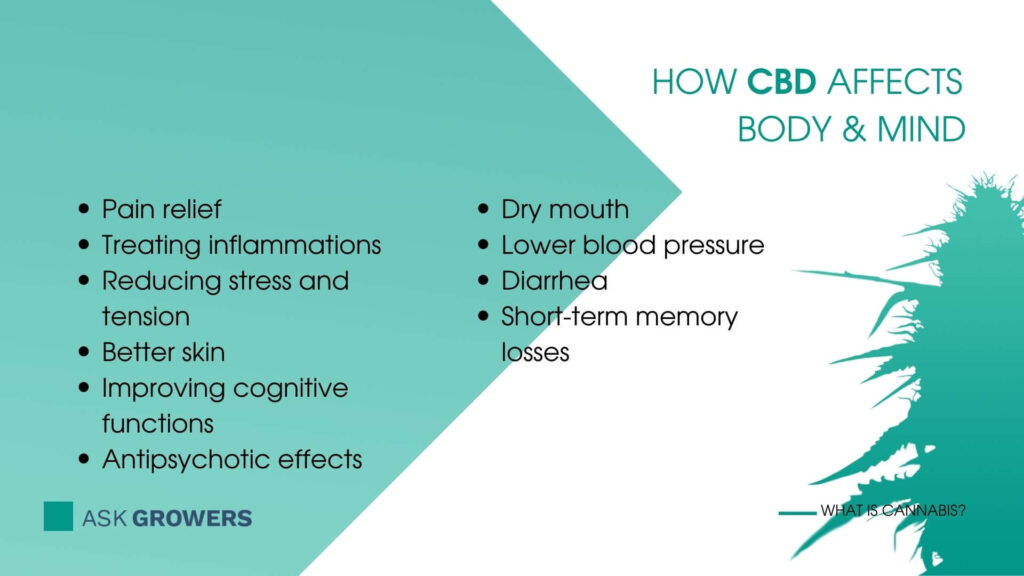 You’ll find CBD in different products today. Apart from purchasing actual strains, you can buy CBD oils, sweets, and other items.
You’ll find CBD in different products today. Apart from purchasing actual strains, you can buy CBD oils, sweets, and other items.
It’s critical to understand that CBD at large doses might deliver some negative effects. Those could include:
- Lowered blood pressure
- Dry mouth
- Nausea and diarrhea
- Short-term memory loss
The experts advise being careful when starting to use CBD. It’s smart to begin with low doses and increase until you find the optimal level for your requirements.
CBG – Cannabigerol
Cannabigerol is vital because it’s a precursor of other cannabinoids. Even with only 1% in marijuana strains, CBG flower is capable of doing its job. Apart from being important for overall cannabis effectiveness, cannabigerol might be beneficial for treating glaucoma. CBG benefits include assisting in relieving IBD (inflammatory bowel disease) symptoms and improve appetite for those suffering from eating disorders. You’ll find CBG oil and many other products on the market.
Other Major Cannabinoids You Should Know
You won’t find that other cannabinoids are more popular than THC and CBD. Those two are the focus of most clinical studies, but we expect other cannabinoids to attract more interest soon. At this point, we know how some of them work.
Here is an overview of other major cannabinoids and their effects:
- THCV – it’s short for tetrahydrocannabivarin. You’ll often find it in small quantities in cannabis, but THCV strains might have strong anti-anxiety properties. Other benefits include assisting in improving motor control and dealing with tremors and similar problems. Some studies even suggest THCV effects could accelerate bone growth.
- CBC – it stands short for cannabichromene. You’ll often find it in abundant quantities, and it’s famous for fighting against inflammation. It has antibacterial and antifungal properties, and the research confirms it doesn’t have psychoactive properties.
- CBGV – the compound has a name that’s hard to pronounce – cannabigerivarin. There isn’t much research, but some studies suggest it can help in dealing with inflammatory conditions.
- CBDV – the substance has a similar structure to cannabidiol, which means it doesn’t have psychoactive characteristics. It’s why some studies mention it could help patients with epilepsy and other seizures. Some research even indicates it could be helpful to deal with symptoms related to autism.
- CBCV – this is a phytocannabinoid with the full name cannabichromevarin. We don’t know much about it, but the scientists mention that it doesn’t have psychoactive properties. It might be helpful to provide stress and pain relief but also help with inflammation conditions.
- CBN – it stands short for cannabinol. The crucial thing to note is that it’s psychoactive, which means it can interact with your mind. However, it’s nowhere nearly as powerful as THC. Older cannabis herbs often have a higher level of CBN cannabinoid, and some studies mention it promotes optimal sleep.
- CBDA – it’s short for canabidiolic acid. You’ll often find it in topical products and tinctures. CBDA oil might be helpful to provide pain and inflammation relief. Other CBDA benefits include that it could assist in adjusting serotonin levels. That could improve mood and help with digestion disorders.
- THCA – if you are wondering what is THCA, it’s tetrahydrocannabinolic acid. Although it’s similar to THC, it doesn’t have psychoactive properties. THCA benefits include anti-inflammatory characteristics and helping to treat appetite loss and nausea.
What are terpenes and are they important?
Does cannabis contain only cannabinoids and nothing but them? Well, this is a unique plant, but it is still a plant, and like a lot of other trees, bushes, flowers, it also contains terpenes. These are secondary metabolites produced to protect the plants from various threats, for example, from pests. In general, there are over 25,000 terpenes, but in cannabis, there are about 15 most common ones. The most prominent of these are myrcene, limonene, caryophyllene, terpinolene, and, of course, pinene.
Read Also: What Are Terpenes?
Yes, these compounds make different strains that taste and smell different. A strain that contains more pinene smells more like pine, and a strain that contains more limonene smells more like citrus. However, this is not the only thing terpenes are responsible for.
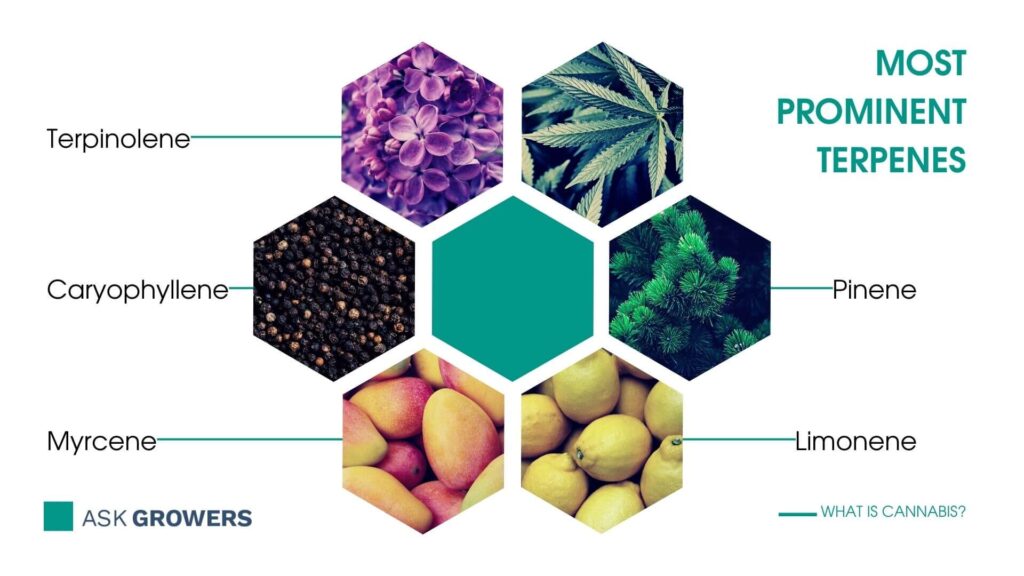
The most important thing to take into account is that there is a synergy between them and cannabinoids. In 1992, a remarkable discovery was made – it proved that terpenes can affect the same receptors as cannabinoids. Moreover, they produce their own effects and influence on the way cannabinoids affect the human body. Of course, not all of them are studied well enough, but still, even the recognition of how many combinations of existing terpenes and cannabinoids can be created and how many different effects the new strains can produce is mind-blowing.
The most popular marijuana seeds for beginers
Can We Use Marijuana Compounds to Treat Diseases?
You’ve surely heard of “medical marijuana.” Many states and doctors accepted using this herb to assist in treating certain medical conditions or manage their symptoms. There’s still room for research, but cannabis is often a complementary treatment aimed to provide relief from some symptoms.
Here are some things cannabis can assist with:
- Inflammation conditions
- Vomiting and pain during cancer treatment
- Sleep and eating disorders
- Anxiety, depression, and other mood disorders
- Gastrointestinal conditions like IBD
- Alzheimer’s, epilepsy, and other neurodegenerative diseases
The effectiveness of cannabis varies from one patient to another.
It’s critical to understand how specific cannabinoids can be used in medical treatments. For example, THC can help to:
- Improve the patient’s mood
- Cure cramps and provide pain relief
- Promote appetite and deal with eating disorders
- Support optimal sleep and provide relaxation
If we take a closer look, CBD also has some similar benefits:
- Mood improvement and stress relief
- Dealing with nausea, vomiting, and related issues
- Assisting with dealing with symptoms of mental disorders
- Treating migraines
- Providing pain relief
It’s crucial to pinpoint that cannabis isn’t a panacea. That means it’s not a medical treatment that can treat all diseases or a variety of them. Each organism reacts differently, and it’s crucial to identify the right marijuana product for you. That’s why you should consult with both a medical professional and experts in your dispensary.
Your goal is to use cannabis properly. If you stick to the recommended doses and use high-quality products, you increase the odds of experiencing the desired benefits.

What Are Cannabis Strains
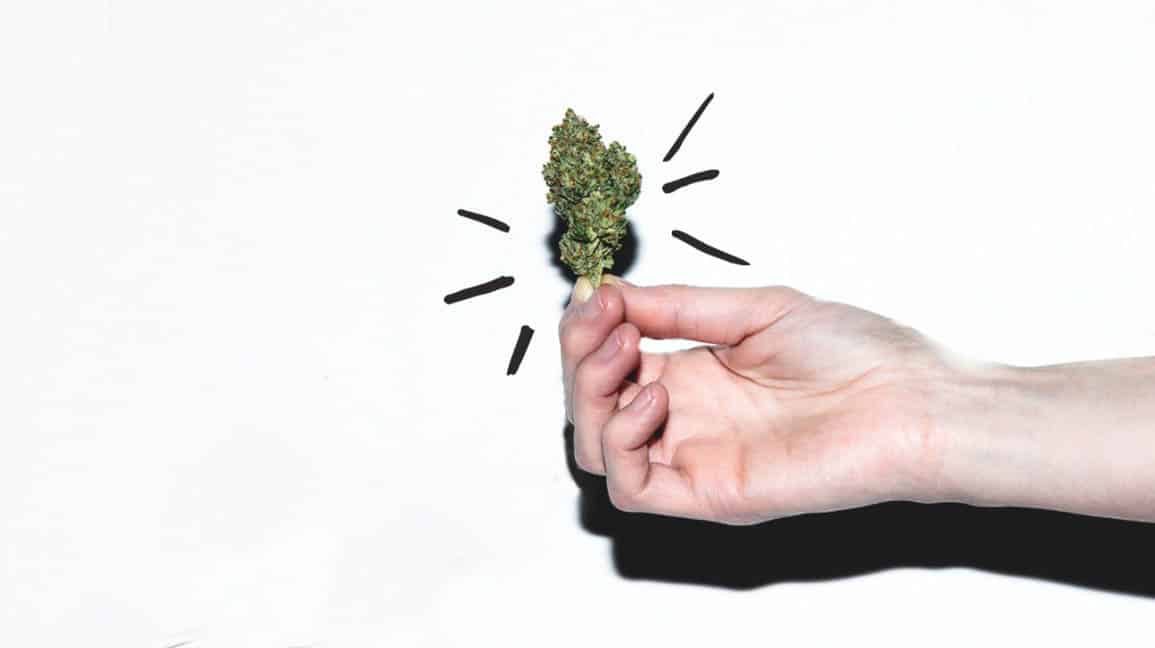 Even if you have never smoked weed before, you have probably heard about cannabis strains. It may seem that one does not need any specific explanations of what strain of a plant is, but in the case of cannabis, it is necessary.
Even if you have never smoked weed before, you have probably heard about cannabis strains. It may seem that one does not need any specific explanations of what strain of a plant is, but in the case of cannabis, it is necessary.
So, initially, there were three species of this plant:
- Indica: short and quite compact plant, larger yields, make a consumer feel the so-called body high (full relaxation, relief.)
- Sativa: a tall plant with long, narrow leaves (which have already become the symbol of cannabis), long-lasting effects, make a consumer feel the mental high (euphoria, happiness.)
- Ruderalis: was found in Siberia, now grows in Europe and some countries of Asia, does not contain enough THC to make a consumer feel high, was used for creating new autoflowering strains.
Though ruderalis is one of the species, the first two of them are much more important because they are usually used in the cannabis industry. Growers have their own opinions about each of them and use them in different ways, but from the point of view of a consumer, Indica is relaxing and Sativa is energizing and euphoric.
So why do we talk about two species instead of discussing cannabis strains? Does it mean that there are only two types of marijuana, Sativa- and Indica-dominant ones? No, it is much more complicated. Decades of studies, scientific researches, and experiments have paid off. Today, people can cross Indica and Sativa and get numerous hybrids, which, in turn, can be crossed, too. So, we have thousands or thousands of possible and existing varieties of cannabis, and they are called cannabis strains.
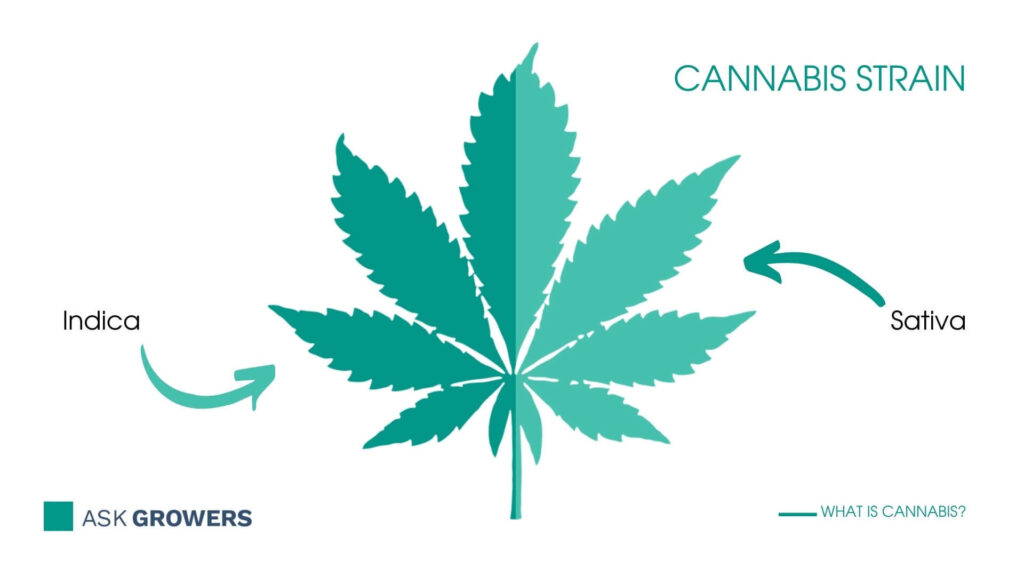
Why do we even need cannabis strain? Well, everything is simple – experimenting with species, levels of THC and CBD allows creating the marijuana that produces a set of different effects.
Generally speaking, they can be divided into four main groups:
- Euphoric. These strains are perfect for people suffering from depression and other mood disorders. They can be as energizing, as relaxing depending on the percentage of Indica/Sativa, ratio, and levels of cannabinoids and terpenes.
- Relaxing. Most of these strains are the so-called nighttime strains that are used to treat insomnia or just relax in the evening. However, not all of them make you sleepy – some of them are also great for watching TV, reading a book or some other similar activity because they make you stay clear-headed and even a bit focused.
- Arousing. Energetic strains are also known as the daytime strains because they act better than coffee. These varieties of marijuana make a consumer feel energetic, uplifted, and also can turn boring household chores into an engaging activity. In most cases, such strains are consumed in the morning or in the afternoon.
- Focusing. These strains are used to be more focused on what you are doing now. They are especially popular with people who need something to get inspired, remote workers, freelancers. Moreover, such strains are often used by artists, musicians, writers – they are loved for their ability to make you super-creative and productive, too.
The best thing about this plant is the number of possible combinations of effects and therefore, strains are nearly endless. Moreover, a euphoric strain is not just euphoric. The focusing strain is doing more than just making you focused on something. You can pick an amazing daytime strain to be more concentrated, inspired and motivated, or a daytime strain to be more creative, or a nighttime strain to treat insomnia and feel that body buzz.
Is Smoking The Only Way To Consume Cannabis?
In short, no it is not. Buds and even oils are not the only products that can be used – there are also tinctures, edibles and even topicals that can be used to treat various symptoms or just to have a great time. In general, all products and ways to consume marijuana can be divided into two large groups: smoking and smoke-free groups.
Inhaling the smoke – Why still popular?
Some may ask “Why do people continue to smoke weed if there are so many great ways to consume marijuana and amazing cannabis products?” Well, this is a good question. Firstly, smoking, as well as vaping allows feeling the effects in a very short time, literally within seconds or minutes. The effects are pretty lasting, too – a consumer feels high and/or relieved during two-three hours. Sounds good, right?
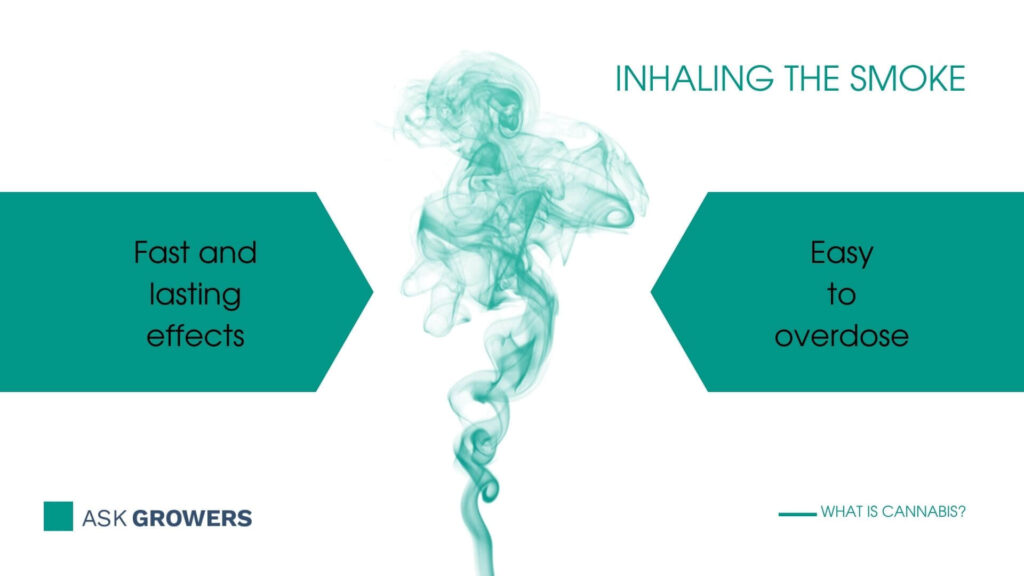
It should also be noted that vaping is even better for heavy smokers than smoking a joint. Firstly, oil is vaporized. Part of the weed in a joint, however, is just burned while inhaling. This means two things: you waste less when vaporizing oils than when smoking, and you feel the more powerful effects. Is this good? Not always. As we have noted before, cannabis can produce negative effects, too, so overdose is no good. Consequently, vaping is better for experienced consumers than for beginners.
By the way, there are also pipes, water pipes, bongs, that can also be considered as smoking ways to consume marijuana. Though they are still popular, there are also people who do not really like the smell and taste of cannabis, even when it comes to the tastiest strains.
Smoke-free ways – Good alternative to smoking cannabis?
The growing popularity of smoke-free ways can be easily explained. Firstly, it is the perfect way to consume marijuana for people who do not want others to know about this. Secondly, it solves all the problems for people who have the plant’s natural smell. Finally, some of these products are really easy to dose.

So, let us take a look at the range of modern CBD and/or THC products.
- Tinctures. This is like taking a medication – you have a dose, you have a medication, you know what you need to do and what to expect from it. People who want to feel the effects of cannabis, just place a few drops under their tongues or add a few drops to their beverage and enjoy them without any smoke or problems with dosage.
- Capsules. Capsules can contain cannabidiol or tetrahydrocannabinol (or both) too. In this case, we do not even need to explain anything – such pills can be taken as regular pills.
- Edibles. This is the most controversial and one of the most favorite ways to consume cannabis for lots of people worldwide. On the one hand, this is just tasty – there are a lot of cannabis sweets you can make or buy. On the other hand, you never know when it is too much unless you are an experienced consumer who knows exactly how much you need to feel what you expect to feel. This is especially important considering that effects can last for 8-12 hours after you eat a chocolate bar or some gummy bears with cannabis. If you do everything right, long-lasting effects are great, but if you do anything wrong, the consequences can be very unpleasant.
- Topicals. Yes, some topicals contain a lot of cannabidiol. As we have noted before, cannabis can also be used to relieve localized pain, as well as to reduce localized inflammation – in such cases, topicals are more helpful than anything else.
As you can see, smoking buds is not the only option to consume marijuana. There are even such techniques as microdosing that are supposed to produce more powerful effects and can be especially useful for people who use cannabis for medical purposes.
Final Thoughts
Is it possible to list all the effects produced by this plant? No, it is not, and not only because it is still understudied or because it can produce any effects. The thing is they depend. They depend on lots of factors Indica/Sativa ratio, level of THC, the concentration of CBD, the strain, the one who consumes it, etc. We do not even know everything about minor cannabinoids and terpenes, we know only that there are a lot of them. Just imagine that there are over one hundred cannabinoids not including the two most famous ones, and lots of terpenes.
The number of possible combinations and ratios is endless, especially considering that growers can cross hybrids to get other hybrids and so on to infinity. All this makes cannabis, not just a special plant that can help you relax in the evening but also a plant that has an enormous potential when it comes to medicine and recreational use.
But, even if we focus on what we know about it now, we will find out that marijuana is not just something that only brings high. There is a reason why the majority of states have already made it legal, at least when it comes to medical use. This plant can significantly improve the quality of life for someone who is trying to treat a certain disease or someone who just wants to get rid of depression without being addicted.

 Education
Education

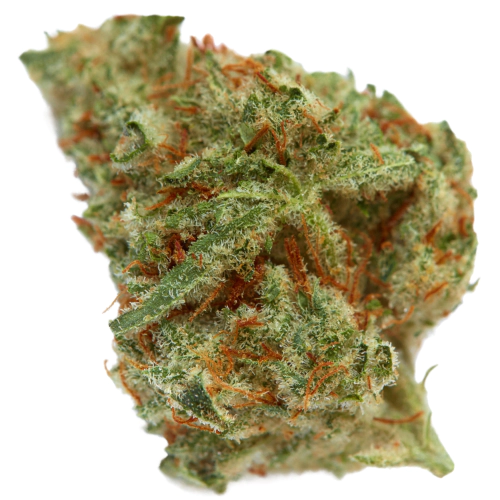
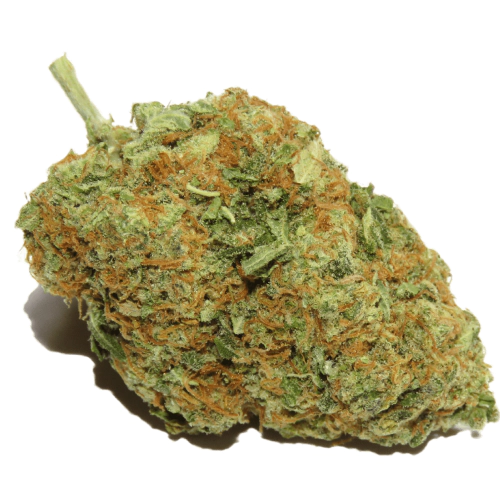

.png)

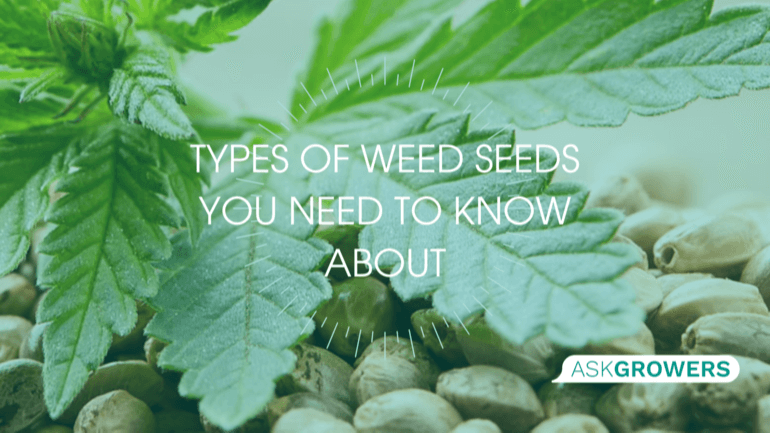
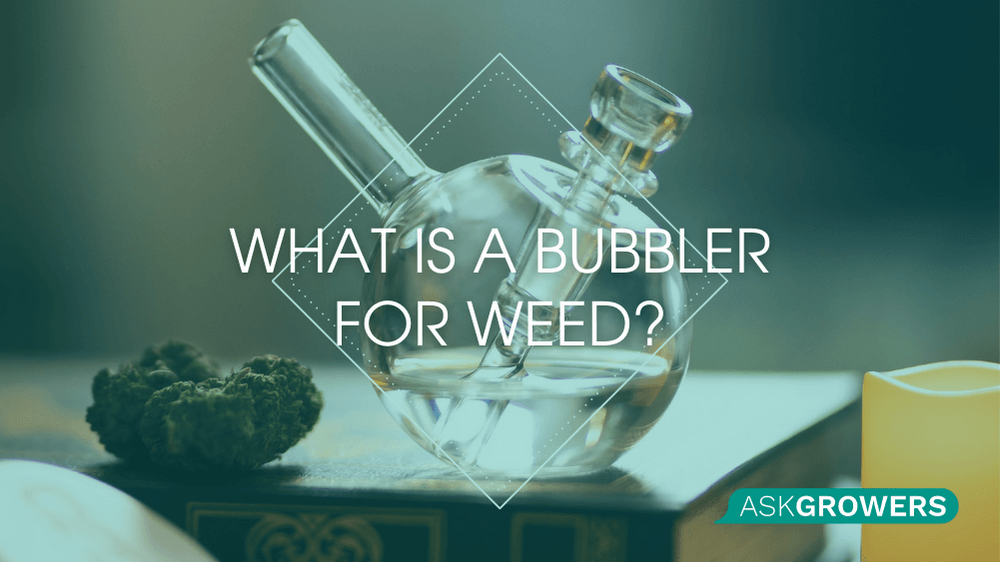
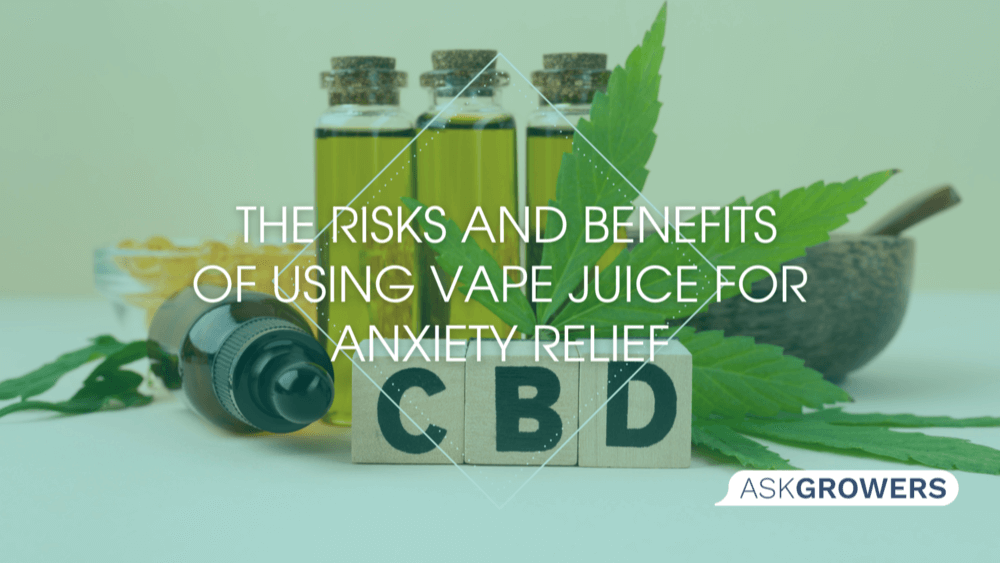

 (1).png)
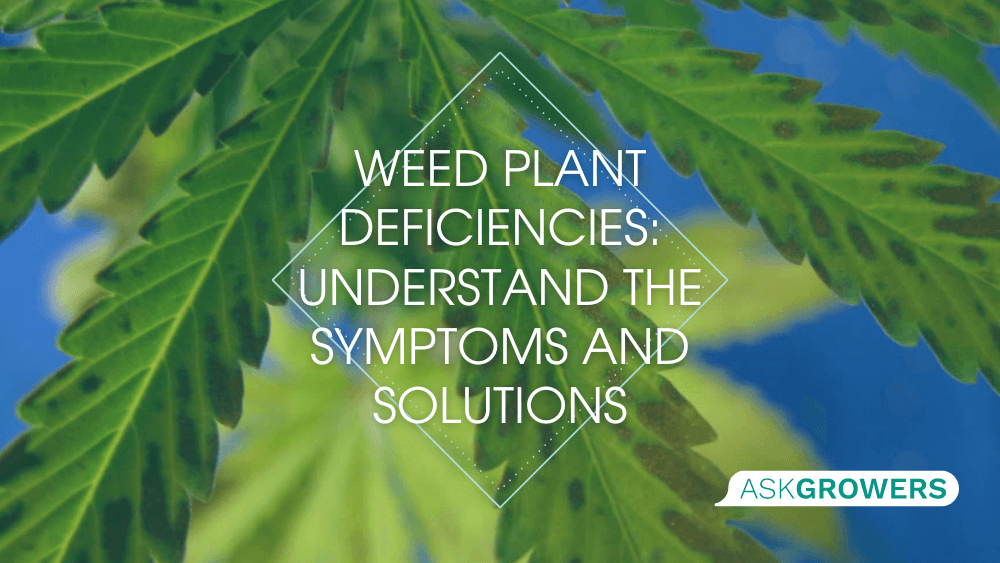
.jpg)

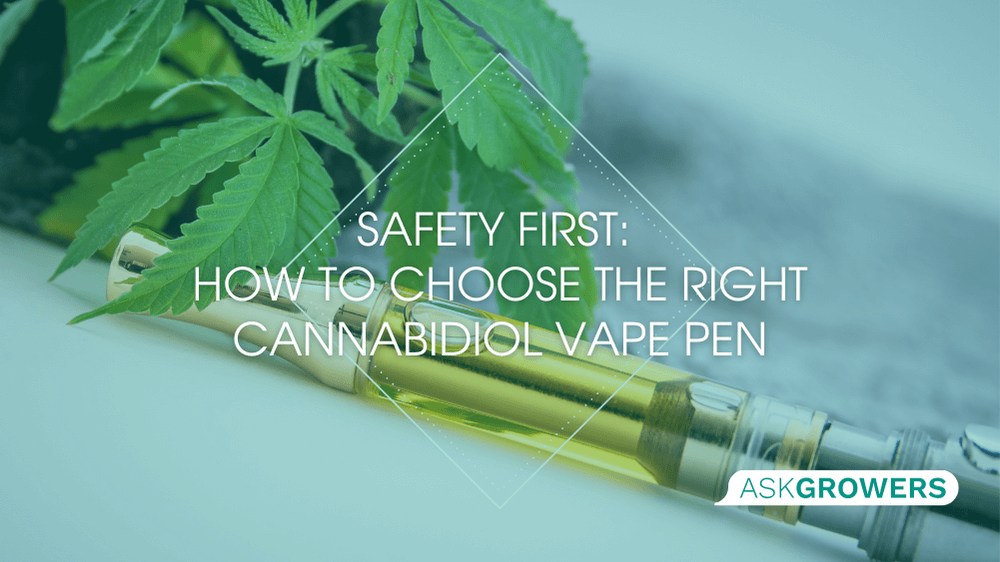
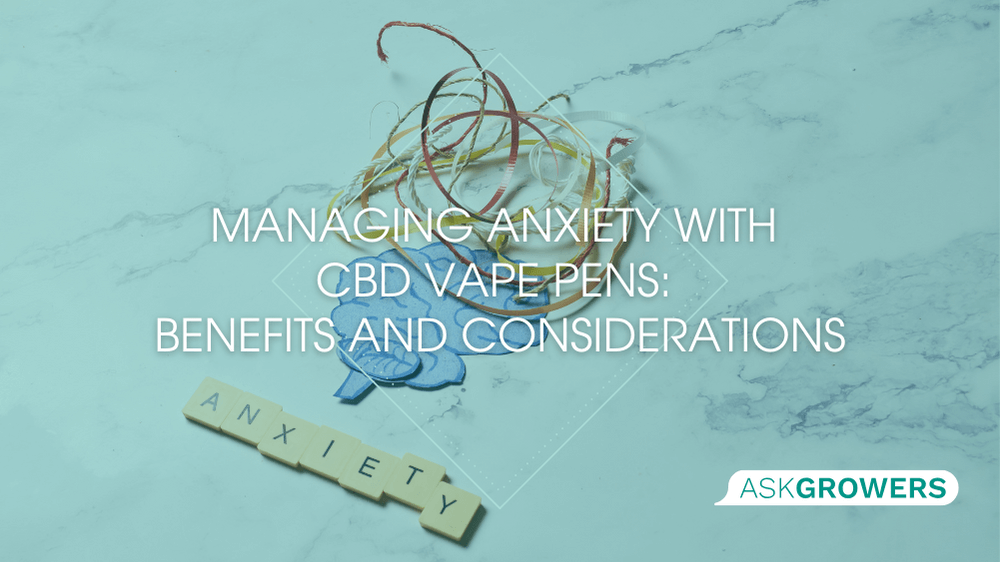
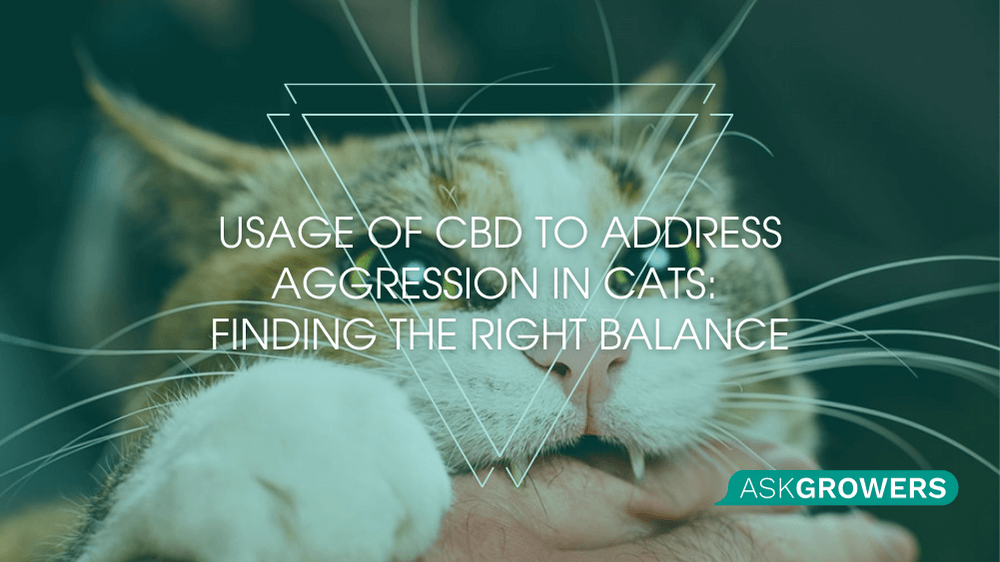
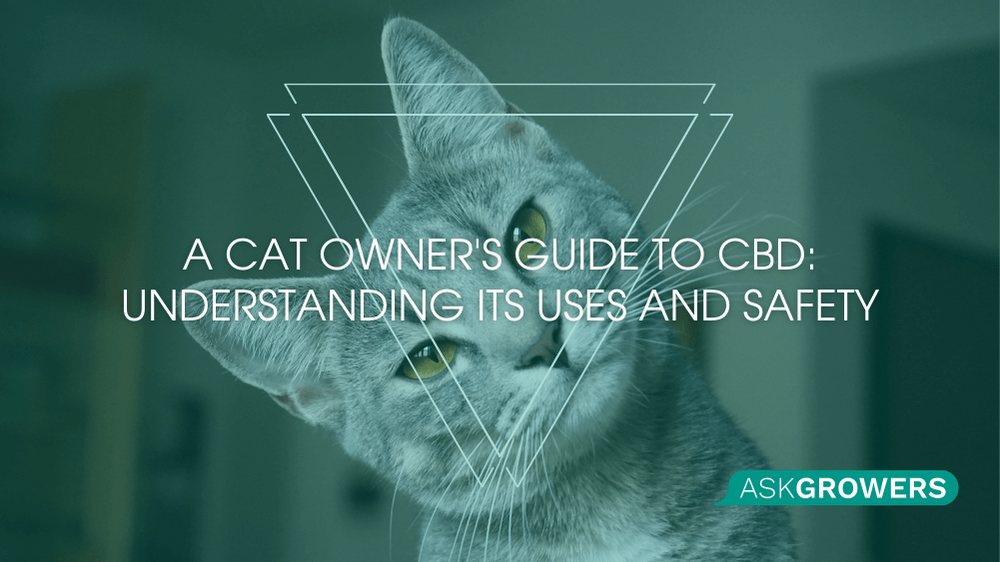
Be the first and share your opinion
Write a Review